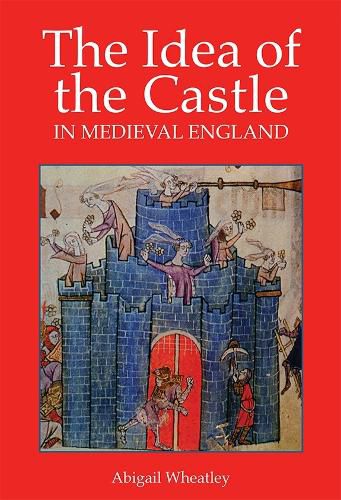Readings Newsletter
Become a Readings Member to make your shopping experience even easier.
Sign in or sign up for free!
You’re not far away from qualifying for FREE standard shipping within Australia
You’ve qualified for FREE standard shipping within Australia
The cart is loading…






Medieval castles have traditionally been explained as feats of military engineering and tools of feudal control, but Abigail Wheatley takes a different approach, looking at a range of sources usually neglected in castle studies. Evidence from contemporary literature and art reveals the castle’s place at the heart of medieval culture, as an architecture of ideas every bit as sophisticated as the church architecture of the period.
This study offers a genuinely fresh perspective. Most castle scholars confine themselves to historical documents, but Wheatley examines literary and artistic evidence for its influence on and response to contemporary castle architecture. Sermons, sealsand ivory caskets, local legends and Roman ruins all have their part to play. What emerges is a fascinating web of cultural resonances: the castle is implicated in every aspect of medieval consciousness, from private religious contemplation to the creation of national mythologies. This book makes a compelling case for a new, interdisciplinary approach to castle studies.
ABIGAIL WHEATLEY gained her PhD at the Centre for Medieval Studies, University of York.
$9.00 standard shipping within Australia
FREE standard shipping within Australia for orders over $100.00
Express & International shipping calculated at checkout
Medieval castles have traditionally been explained as feats of military engineering and tools of feudal control, but Abigail Wheatley takes a different approach, looking at a range of sources usually neglected in castle studies. Evidence from contemporary literature and art reveals the castle’s place at the heart of medieval culture, as an architecture of ideas every bit as sophisticated as the church architecture of the period.
This study offers a genuinely fresh perspective. Most castle scholars confine themselves to historical documents, but Wheatley examines literary and artistic evidence for its influence on and response to contemporary castle architecture. Sermons, sealsand ivory caskets, local legends and Roman ruins all have their part to play. What emerges is a fascinating web of cultural resonances: the castle is implicated in every aspect of medieval consciousness, from private religious contemplation to the creation of national mythologies. This book makes a compelling case for a new, interdisciplinary approach to castle studies.
ABIGAIL WHEATLEY gained her PhD at the Centre for Medieval Studies, University of York.